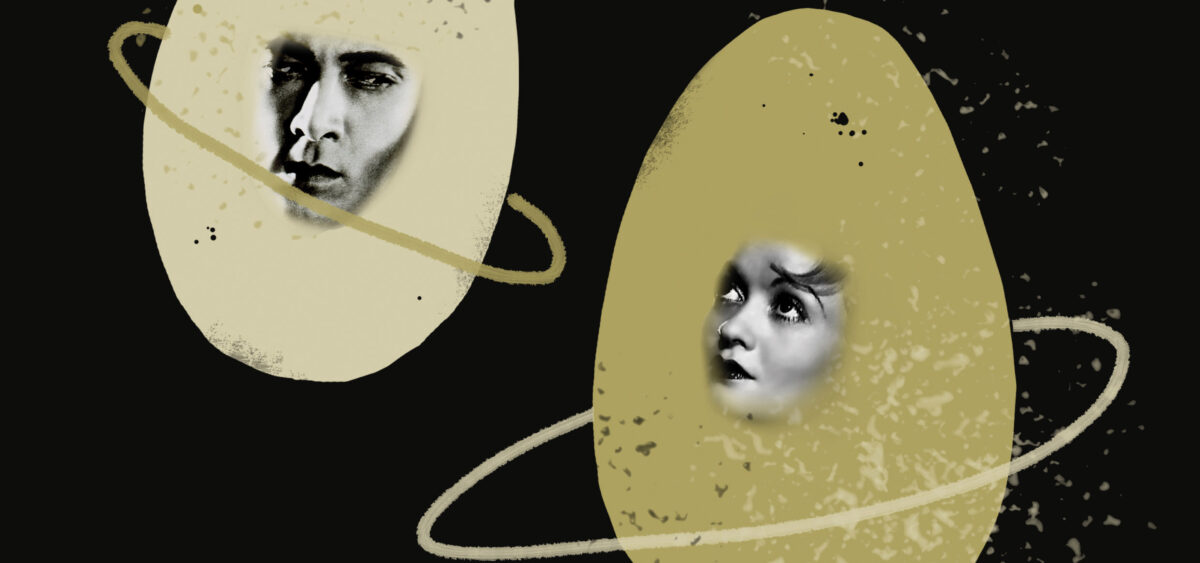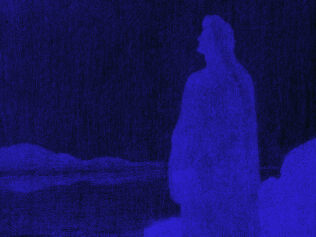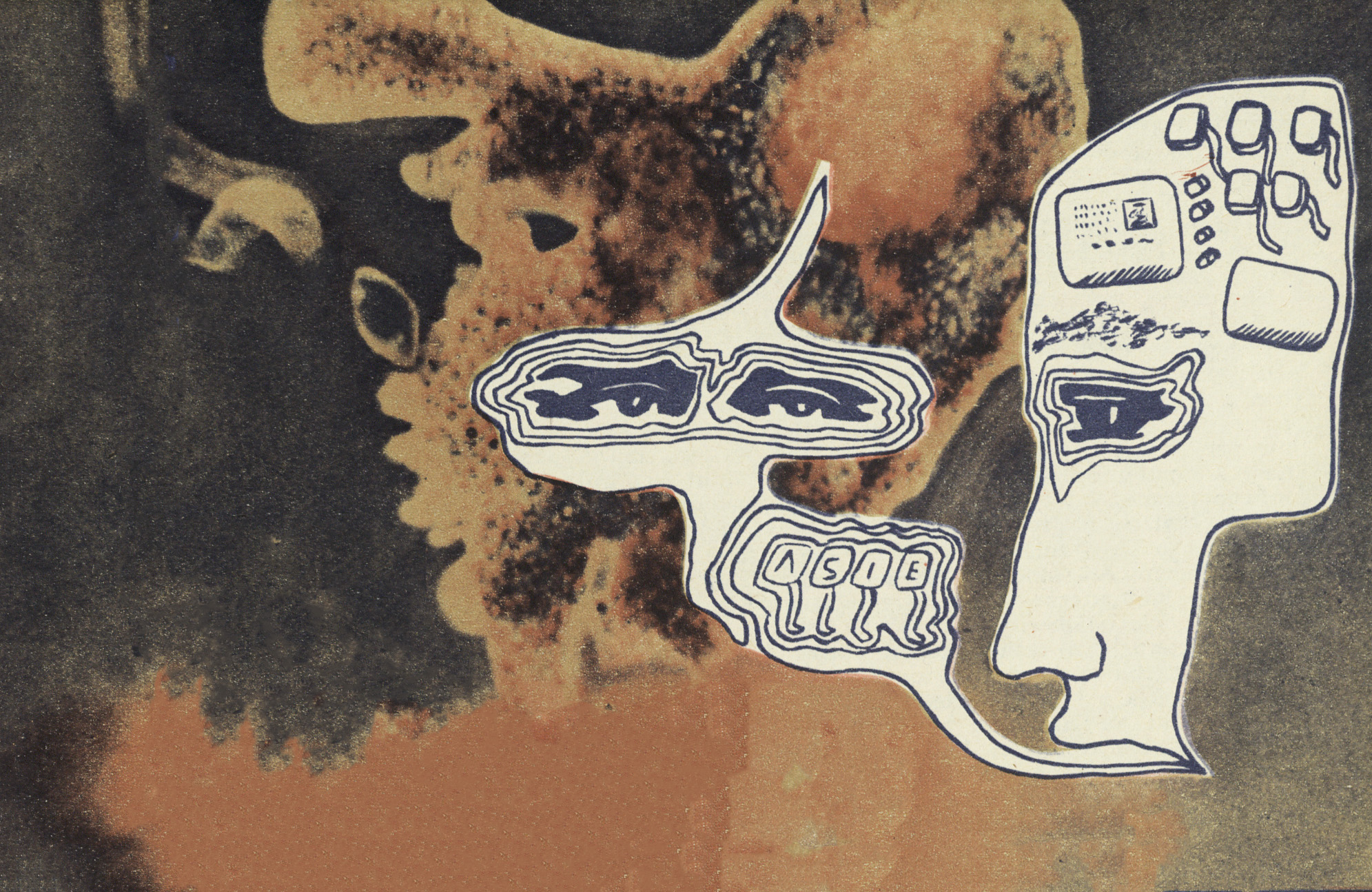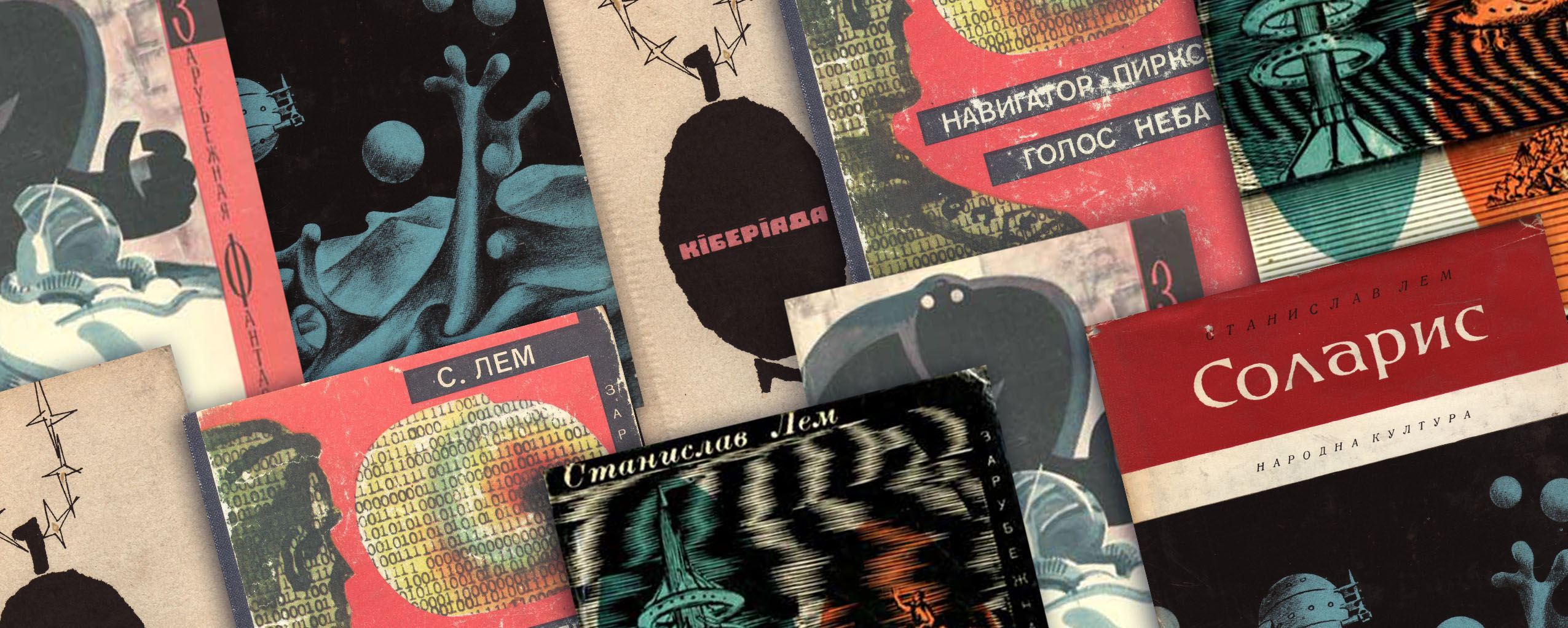
But what if the world around us is merely an illusion? On the occasion of the centenary of Stanisław Lem’s birth, we recall a few disturbing visions from the works of this exceptionally gifted writer.
“What can a person connected to a phantomatic generator experience? Everything. He can climb the Alps, wander around the Moon without a spacesuit or an oxygen mask, conquer medieval towns or the North Pole while heading a committed team and wearing shining armor.”¹ When he wrote these words (published in his weighty tome of scientific essays entitled Summa technologiae, 1964) and fantasized about the directions taken by technological development that would allow people to pass imperceptibly into a fictional world, Stanisław Lem already had to his name several novels and short stories, in which he had successfully explored problems of phantomology, and was still to produce several more. Not all of his visions resemble benign role-playing games. For Lem, virtual reality usually had a much darker aspect.
From amusement to control
The first steps taken by Hal Bregg, who returns to Earth after 127 years of space exploration, are accompanied by bewilderment. The world has changed beyond recognition; the station itself resembles a great organic city. Robots are at work everywhere, people carry themselves differently from before, speak differently and spend differently their free time, of which they have more than enough. In addition, certain buildings, interiors and landscapes look as though they’re not part of tangible reality. Bregg’s premonitions that this is in fact the case are confirmed the following day when he encounters an amusement park and by chance a virtual cinema, where he takes part in a voyage up an African river. His boat crosses vast tracts of genuine jungle and smashes against rocks, while Bregg – before landing on the hard floor – miraculously saves life by extricating an alluring female companion of the crazy expedition from the whirling depths of a waterfall. Soon afterwards he learns that this part of reality – along with 3D cinemas where popular romances are shown, and the ubiquitous television – are called by the inhabitants of this new world the ‘real’.
What is the amusement park portrayed in Return from the Stars? Roughly what Lem describes in Summa technologiae – a three-dimensional cinema equipped with generators of smell and simulators of movement which allow spectators to feel themselves to be participators in a dangerous expedition or guests at a sorcerer’s court. At the same time, this is not total delusion. The viewers – although drenched in real water – are not connected by cable to a phantomatic machine, which would stimulate their central nervous systems completely severing them from reality; nor do they even believe that what they see and participate in is really happening. On the contrary: they are aware of taking part in a safe fiction, created in order to dispel their boredom. Even Hal Bregg is not totally fooled. He knows that the branch sticking out of the water is only a hologram of a tree and that the dangerous waterfall does not exist. However, his senses and instincts – those of a man from a bygone era, sharpened by years of genuine space exploration – react differently, unable to accept that the world has changed into its own dummy.
And indeed, the ‘real’ amusement park resembles a computer game in which you can die more than twice. Reality is fake, emotions are also fake, even if they are accompanied for a while by the authentic fear that this time the apparatus may go wrong or catch you unawares with a new idea, and something unexpected will happen. Someone may ask: well, so what? Except the snag is that the novel’s ‘real’ soon turns out to be the quintessence of civilization, from which – thanks to a chemical change in the genotype of the whole species – not only violence, aggression and the need for risk have been expunged, but also any kind of intellectual or artistic aspirations, replacing them with docility and mediocrity. In such a world, the essential means of maintaining order is universal control; while its side effect is a panic-stricken fear of stress. Lem was well aware of this, warning in Summa technologiae of various dangers that the new technology would bring; and this was by no means just a complaint against the poor quality of virtual entertainment. Much more dangerous, so he prophesied, will be the confusion of reality with fiction (typical, let us add, of our social-media civilization), which could lead to the suspension of people’s taking responsibility for their own actions, as well as to nervous breakdowns, when a person awakened from delusion clashes with reality or has no idea at all where they are. So, on the one hand, there will be the substitute (and immediate) fulfilment of whims, on the other – the threat of a world arising, in which virtual reality will completely oust the authentic. The social and political mechanisms of such bamboozlement were portrayed by Lem in The Futurological Congress.
The great delusion
Unlike in Return from the Stars, where virtual entertainment was an appendage to reality (although not only – pieces of phantom sky were sewn onto the cityscape), everything perceived by the senses in The Futurological Congress is a delusion masking a deplorable social reality. This is no longer about a fairy-tale fiction filling the existential void of bored people in a world rid of major worries, but about a campaign of disinformation implemented with premeditation by the authorities. The essence of the nightmare debated by the respected delegates at the Eighth World Futurological Congress in a luxury hotel in Nounas, capital of the Central American state of Costaricana, is the extreme population explosion on Earth and the equally extreme disparity in people’s incomes, which threatens to break out into world war at any moment. Likewise assailed by unrest, Costaricana stands on the brink of armed conflict. And indeed, riots break out in the city. In response, the authoritarian government resorts to chemical weapons.
The weapons, however, are not for killing. People do not need to be gassed, it’s enough to change their consciousness by spraying special aerosols around the city. The hallucinatory trip experienced by Ijon Tichy, his delusions under the influence of fever, the injuries he sustains, his fictitious stay in hospital, mental illness, hibernation, awakening many years later in a wonderfully Arcadian world from which all illegalities have been eliminated – it all contributes to a grotesque, exaggerated record of experience in a “totally phantomatized” civilization (a term from Summa technologiae) where ‘waking’ no longer exists. Aroused from his state of hibernation, Tichy initially accepts the new state of affairs with satisfaction. No wonder it’s an attractive world at first glance. Who wouldn’t wish to live in times when all social problems vanish on swallowing the appropriate pill, and the gas present in the air soothes the psyche, imparts a feeling of wellbeing and satisfies all human needs? In a world where the police fraternize with citizens, the army lays down its weapons, and the arduous long-term process of education is replaced by knowledge contained in an aerosol? An aerosol supplied naturally by the authorities and strictly controlled by them, since they have most to hide. For beneath the clouds of narcotic haze there lurks a world far worse than the former: more overpopulated, unjust and devastated, and perched on the brink of ecological disaster. Already, for these reasons alone, according to Lem, the total phantomization of civilization would be equivalent to its suicide.
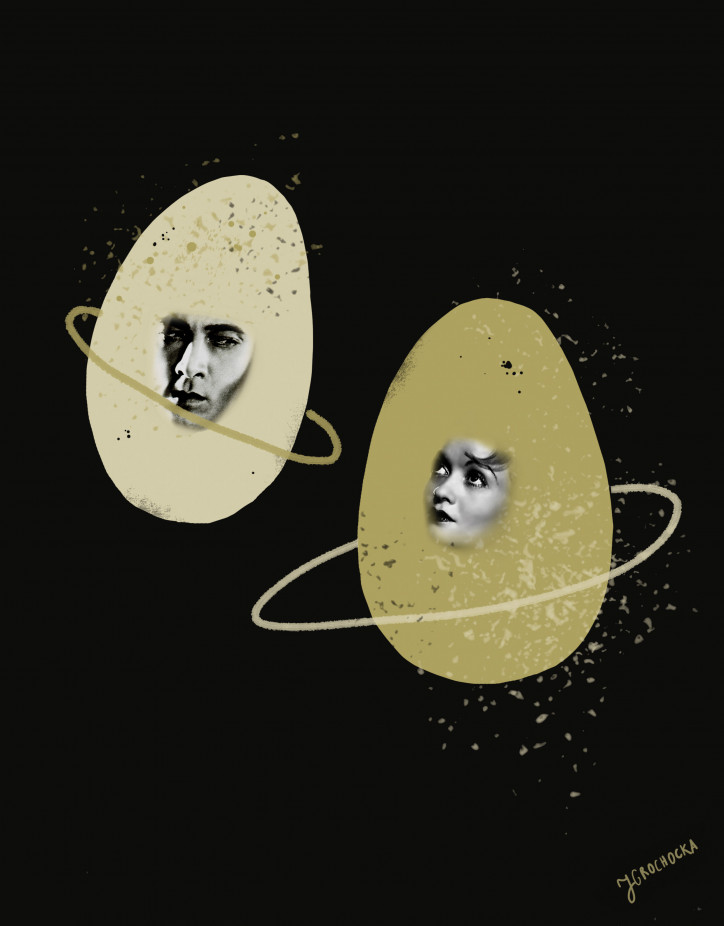
Here we see a loss of certainty as to what is ‘waking’ and what is hallucination, or more broadly – a loss of certainty as to the foundations of our existence. Do we ‘really’ exist or only as content in the consciousness of another being? And what exactly does this alter in our condition? Lem, aware of the nightmare into which metaphysics has led us by linking being to thought, delights in reviving the question concerning the limits of human cognition and our ontic status. The experiment conducted by Professor Corcoran – the crazy inventor in one of the stories from The Star Diaries, who locks electronic brains in hermetically sealed boxes, creating self-sufficient monads equipped with artificial memory and respective impressions and, in a word, leading allegedly artificial lives (though indistinguishable from real) – shows that we too cannot be certain that we are not someone else’s phantom. What if we ourselves are living in a hermetically sealed box, called for convenience God or the world, while everything around us is merely a projection of the content recorded by someone else on perforated tape? And what if this situation were repeated ad infinitum? Box within box, phantom within phantom, yet with ghosts all around?
Uninvited guests
In Solaris, his most famous novel, Lem skilfully clothes his metaphysical speculations in the familiar staffage of the classic gothic tale. The space station itself – neglected, cluttered and tarnished by the passage of time – where psychologist Kris Kelvin lands in order to fathom the secrets of the living ocean, bears an uncanny resemblance from the very start to a haunted house. A claustrophobic atmosphere prevails, someone walks down the corridors, mysterious figures appear: first something that looks like a ghost, then a black-skinned woman. Someone tugs at the door-handle, something clatters somewhere and howls. Of the three scientists remaining on the station, the cybernetician Snaut walks around drunk and says something about mysterious ‘guests’. Doctor Sartorius sits barricaded in his laboratory. The scientist-in-chief of the mission, Kelvin’s former teacher Gibarian, has committed suicide a few hours before the psychologist’s arrival. Kelvin himself no longer knows whether he’s gone crazy or whether everything happening on the station is a morbid hallucination or dream. His state of uncertainty only deepens when Harey appears on board. Disturbingly real, tangibly corporeal, she is not a ghost or hologram like the cinematic figures in Return from the Stars, easily dispelled by the flick of a hand. Harey, Kelvin’s wife, is a living woman; she has memory, feelings, and is capable of love. Except that… she ought not to be there, because she died 10 years before. Kelvin assumes he is dealing with an illusion; however, he completely misunderstands its nature. He makes drastic attempts to free himself from his ‘guest’. Yet the creature stubbornly returns.
Whence these ‘guests’ on board the research station? Guests – since each of the scientists is accompanied by his own visitor: Kelvin by Harey; the dead Gibarian by the black woman; the psychopathic Sartorius by a creature that we never see concealed in the abyss of his laboratory, although imagination suggests a form of homunculus; Snaut by his own fears. The visits begin as soon as the scientists, stubbornly trying to penetrate the secret of the living ocean whose extraordinary nature has eluded human understanding for over 100 years, subject it to beams of powerful X-rays in an attempt to force contact. And then the gelatinous ocean suddenly answers them, summoning into life so-called “F-formations” (“G-formations” in Bill Johnston’s translation) fashioned out of… Well, exactly: out of what? According to Sartorius, they are neither living people nor copies of specific people, but only materializations of projections of what the ‘host’s’ brain knows of a given person. Snaut, who seems to have contemplated the problem the longest (or wishes to share his ruminations), expresses it as follows: “Every ‘guest’ is almost a ghost when they arrive; aside from a hodgepodge of memories and images taken from their… Adam… they’re basically empty. The longer they’re with you here, the more human they become.”
There’s no miracle in this. It’s doubtful that the ocean would wish to establish contact with the researchers or punish them for carrying out the brutal experiment on its body. Presumably it was not acting consciously when it blindly penetrated the innermost recesses of the human brains and produced out of them formations, whose presence proves to be a source of unbearable psychological anguish for the inhabitants of the station. According to Snaut, the ontology of the mind is materialistic: particles talk to particles, electrical impulses affect other electrical impulses, everything is the movement of molecules, of which we and our identity are also composed: “After all, in the brain there aren’t any words, feelings, the recollection of a person is an image written in the language of nucleic acids on megamolecular asynchronous crystals.” It is no different with the ocean, wherein man would like to see an understanding God. The ocean is an unseeing mirror, an indifferent screen for projections: “So it took what was most clearly etched in us, most locked away, fullest, most deeply imprinted, you know? But it had no need whatsoever to know what the thing was to us, what meaning it held.”
Although we know nothing of Snaut’s phantom, it is precisely he who formulates the convincing theory of “mental encystments”: “processes separated from the rest of the mind, enclosed, suppressed, walled in, sore spots of the memory,” which the ocean materializes in the form of indestructible neutrino formations. For although the ocean is no psychoanalyst, it reacts to various electrical tensions in our brains, and plumbs our subconscious with ease. What does it take from it? The buried past, intimate memories, nightmares – in a word, what in Kelvin’s case turns out to be his deceased beloved, but in Snaut’s must remain a mystery just as tormenting as the riddle of Solaris.
Is it possible that Stanisław Lem, as he often did in his novels, smuggled into Snaut a part of himself? If this is the case, then what was he trying to reveal and what cede to the capricious coating of the thinking planet? What did he wish to suggest by closing the door to Snaut’s workroom not only to Kelvin but also to readers; what was he trying to conceal and what annihilate, so that it no longer returned?
¹ Stanisław Lem, Summa technologiae, translated by Joanna Zielińska. Minneapolis, MN and London: University of Minnesota Press, 2013. Quotation on p. 201 of pdf: https://publicityreform.github.io/findbyimage/readings/lem.pdf
Quotations from Solaris are taken from Stanisław Lem, Solaris, translated by Bill Johnston. Kraków: Wydawnictwo Literackie, 2017. Kindle edition only available, pp. 131, 168, 65.
Reference has also been made to the following editions (viewed on Kindle):
Stanisław Lem, Return from the Stars, translated by Barbara Marszal and Frank Simpson. Cambridge, MA and London: MIT Press, 2020.
Stanisław Lem, The Futurological Congress, translated by Michael Kandel. London: Penguin, 2017.
Translated from the Polish by Ursula Phillips


